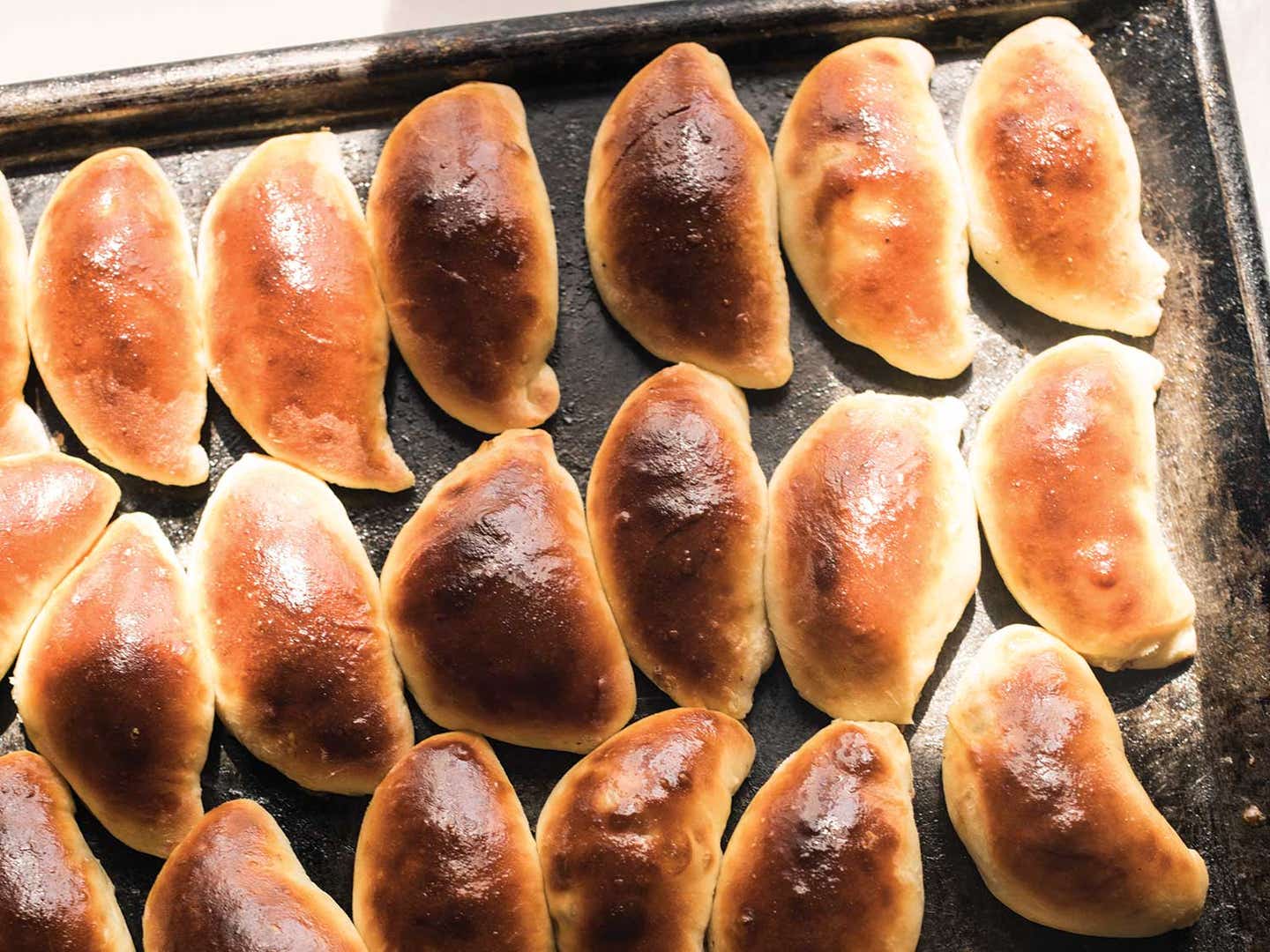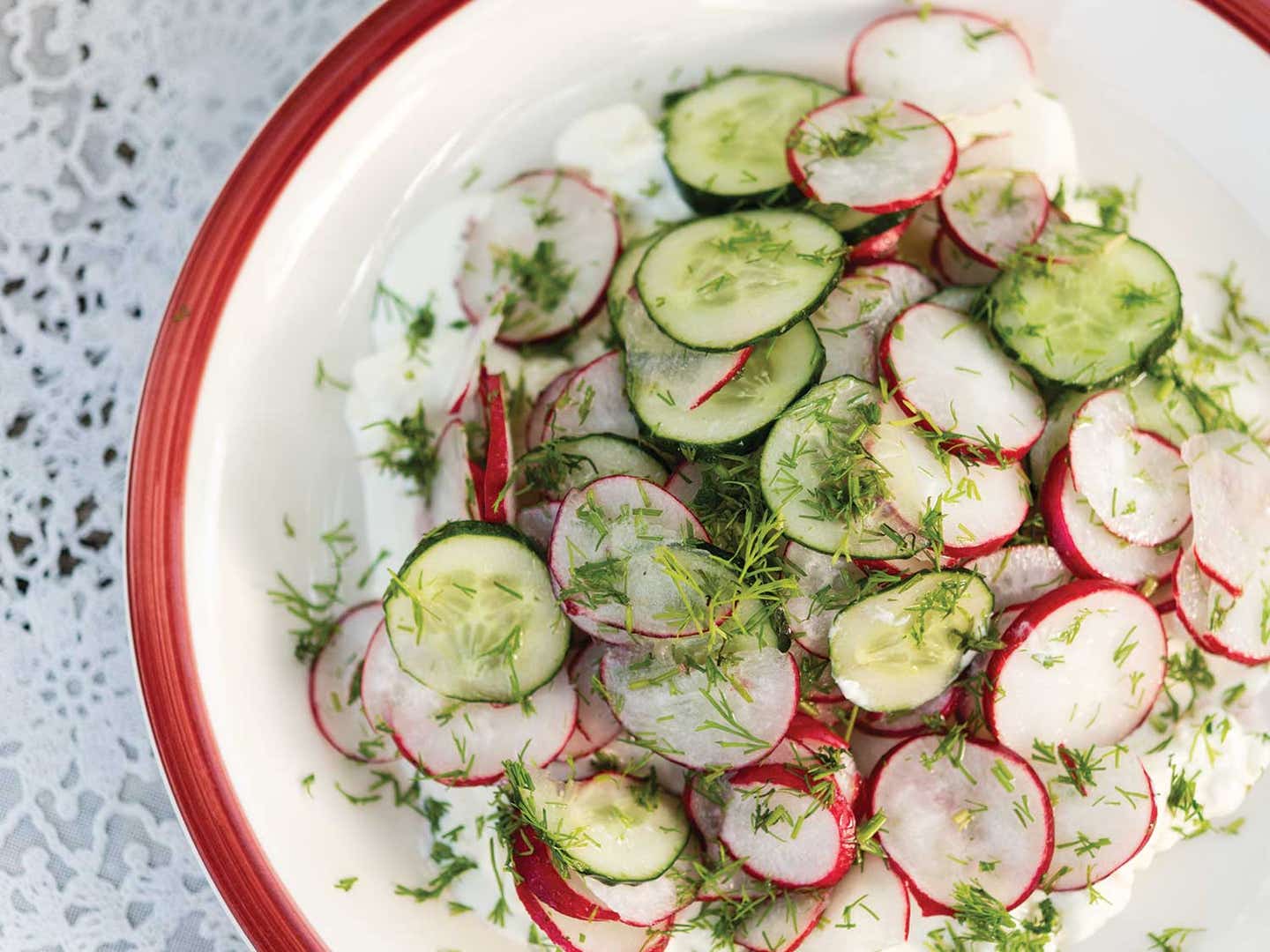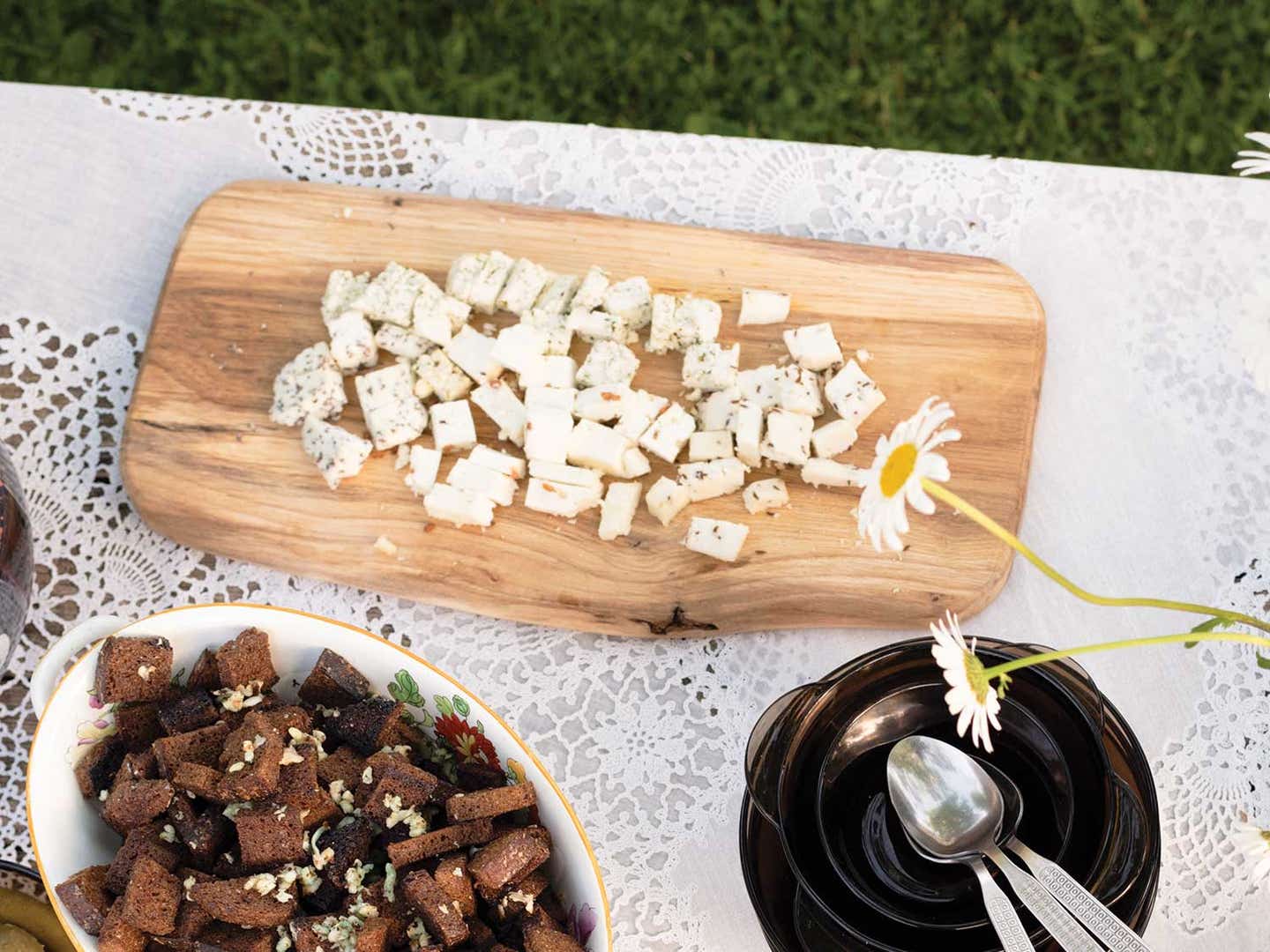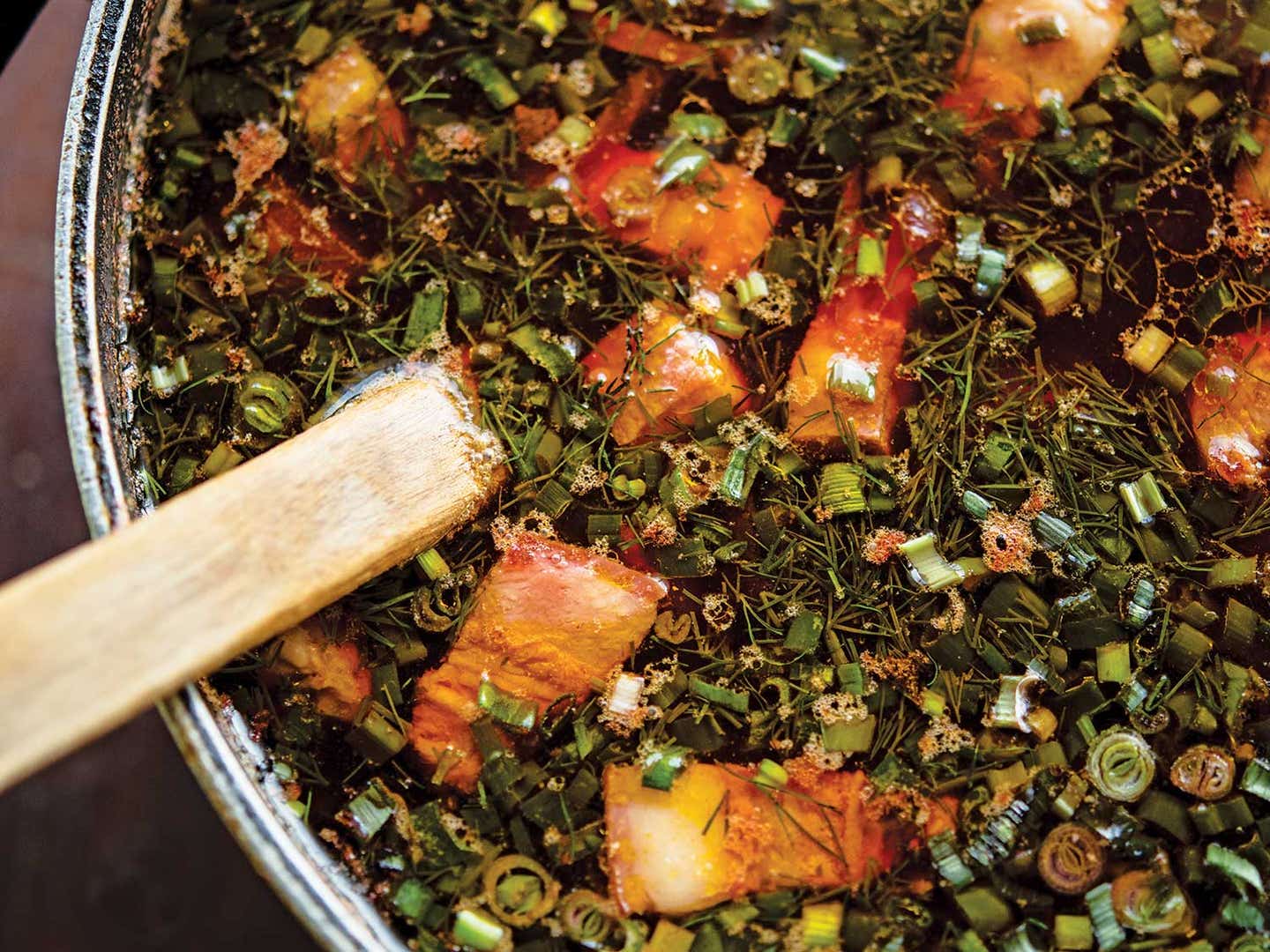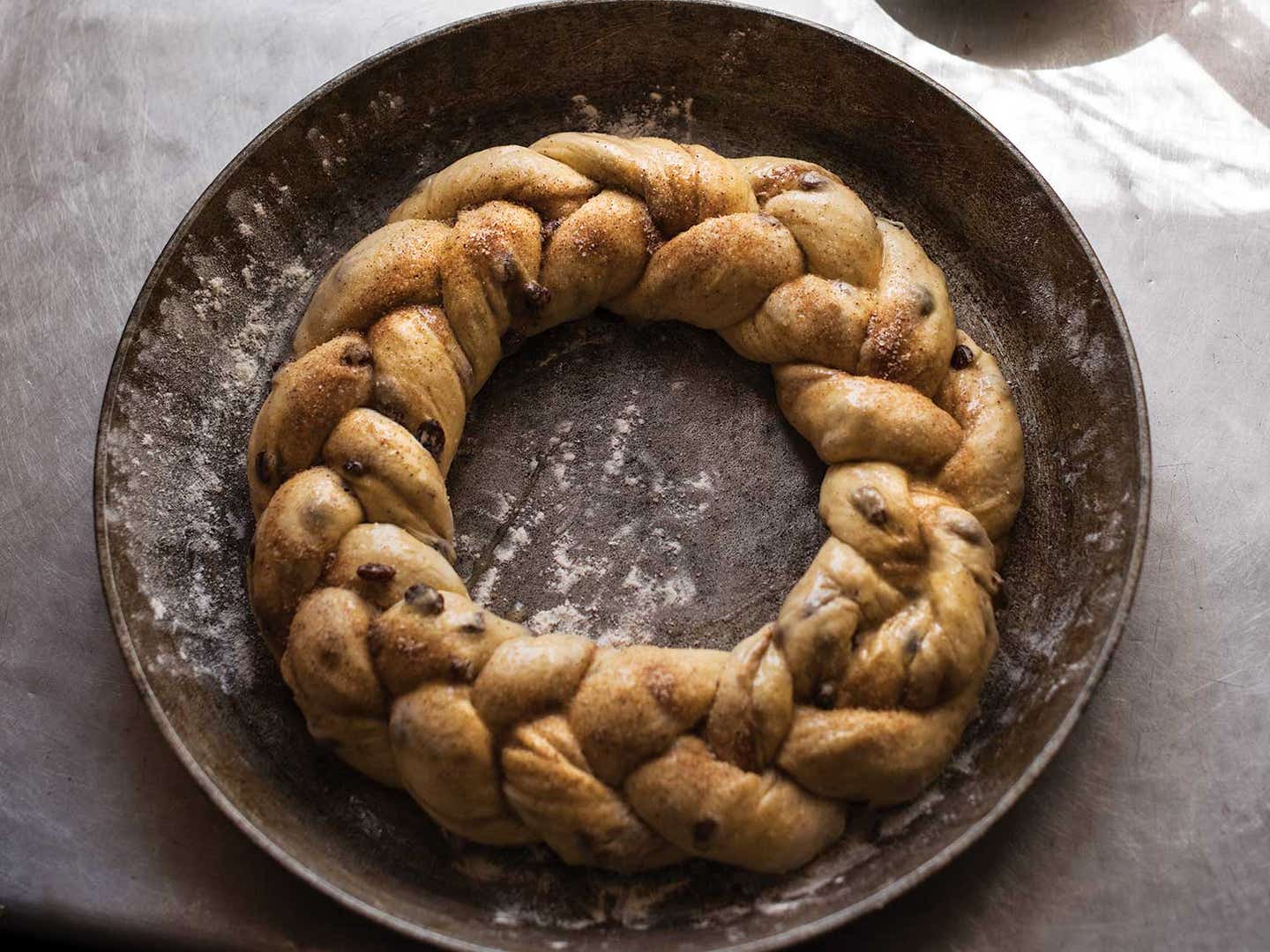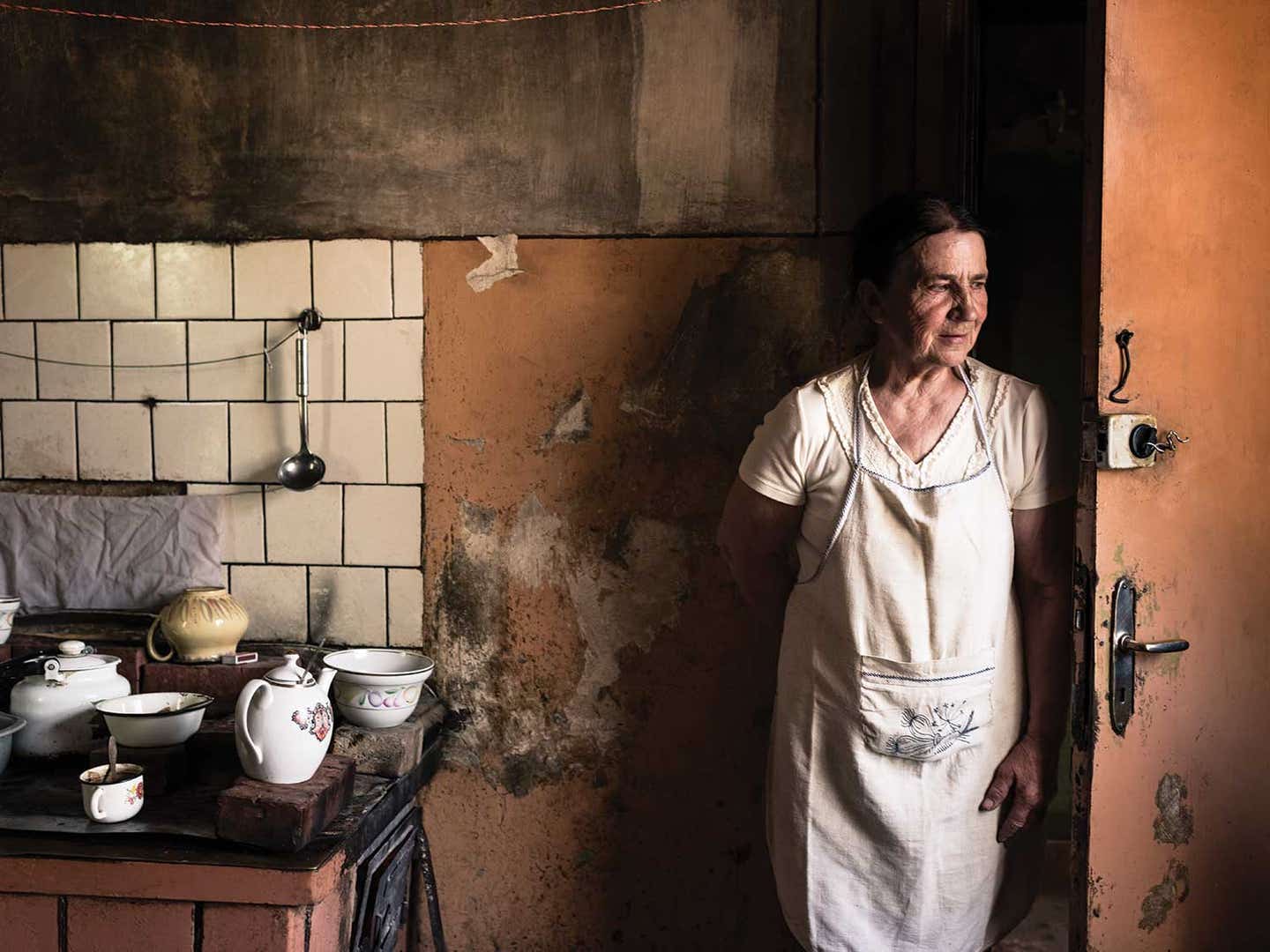
Cooking Lessons from the Latvian Countryside
These lessons include homemade sponge cake, bread croutons, and much more
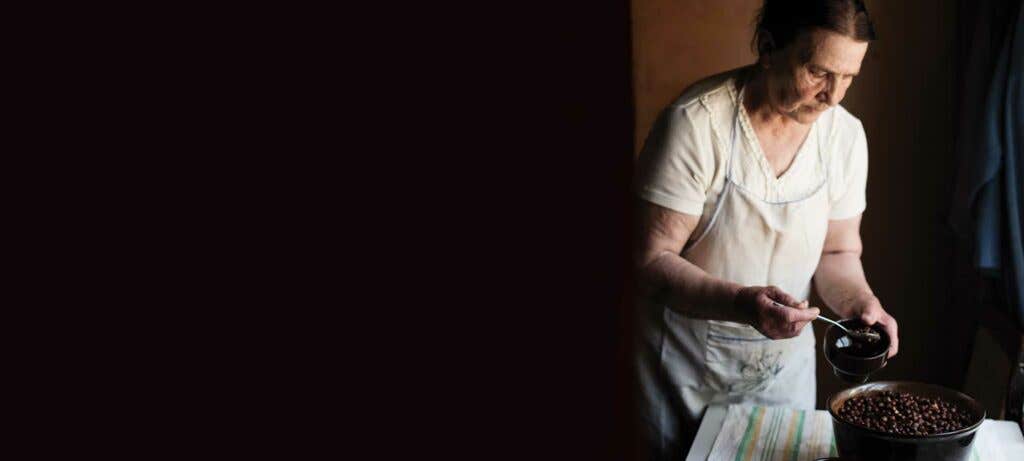
My sister-in-law Sarah and I are walking through the art nouveau district of Latvia’s capital, Riga—though, more correctly, you might say we are wobbling, having just toasted our arrival with many glasses of Riga Balzams, the country’s famous tar-black botanical digestif. Its bitterness feels like a properly dour Eastern European tempering to the bald beauty of this city. Riga is ancient with big modern ambitions, full of manicured flower beds, a perfectly restored Old Town, vendors who sell amber and Latvian runes and thick woolen mittens year-round, and particularly vicious cobblestones. As the stones strain the straps of my sandals, a woman in swank culottes and high-heeled booties, carrying a huge bouquet of freesia, passes us like we’re standing still. In fact, every third person on the sidewalk carries a bouquet of flowers, headed to happy hour somewhere.Riga is but a portal to our real destination, the rural town of Aloja, where Sarah completed what she calls a “relatively cushy” Peace Corps service from 1998 to 2000, and which she hasn’t returned to since. But really, this story begins in Brooklyn, when, after leaving Latvia, Sarah moved into an apartment in Fort Greene with me and her brother, who would eventually become my husband. When we fought—for sure, we fought—it was always about food. It was no wonder we had a hard time sharing a kitchen. I was an ambitious young line cook practicing searing duck breasts, running up ridiculous grocery bills I expected her to split. She was a returned Peace Corps volunteer who brought home dusty bottles of practically lethal 70 percent acid Russian vinegar, and just wanted to fry up a couple of carrot cutlets for her own dinner. She had already learned to cook from the women in Aloja, and she still lived and breathed its flavors, its ethics, and its hardships.Looking back, I can see that she hadn’t fully left Latvia, and instead she was drawing me into it: We drank Balzams and fizzy fermented birch sap, and talked about the famed “fat buns” of Aloja, the speķa pīrāgi, or bacon and onion buns. This, the unofficial national dish of Latvia, has increasingly become Sarah’s memory trigger. So while I’m here to finally go to Aloja with her, meet her friends, and taste these dishes she hasn’t stopped talking about for the past 20 years, I’m also here to see the country through her eyes.
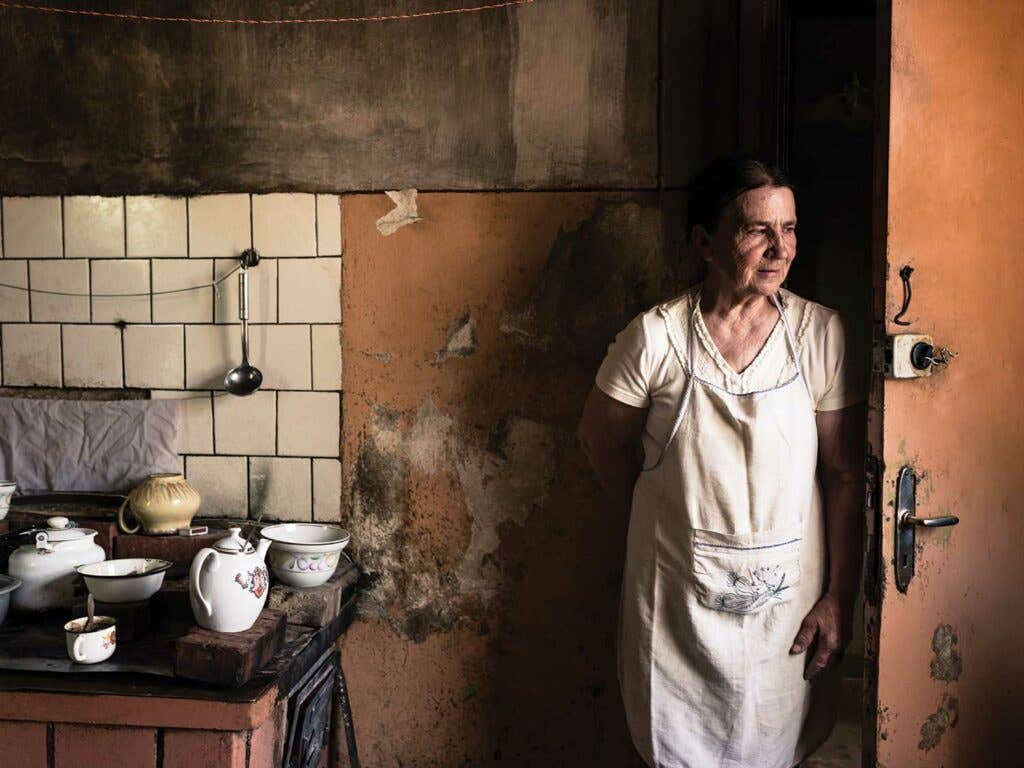
Latvia’s history is a complicated and somewhat disturbing roll call of conquests that finally ended in 1991, when it gained its independence from the collapsing Soviet Union. For centuries previous—save a brief period of independence between the two World Wars—the Swedes, the Germans, and the Russians have all claimed this land as their own. So it makes sense that nature and symbols of the forest have always been incredibly important to the Latvian identity; unlike cities and towns, which can be occupied, wilderness can never be fully won.
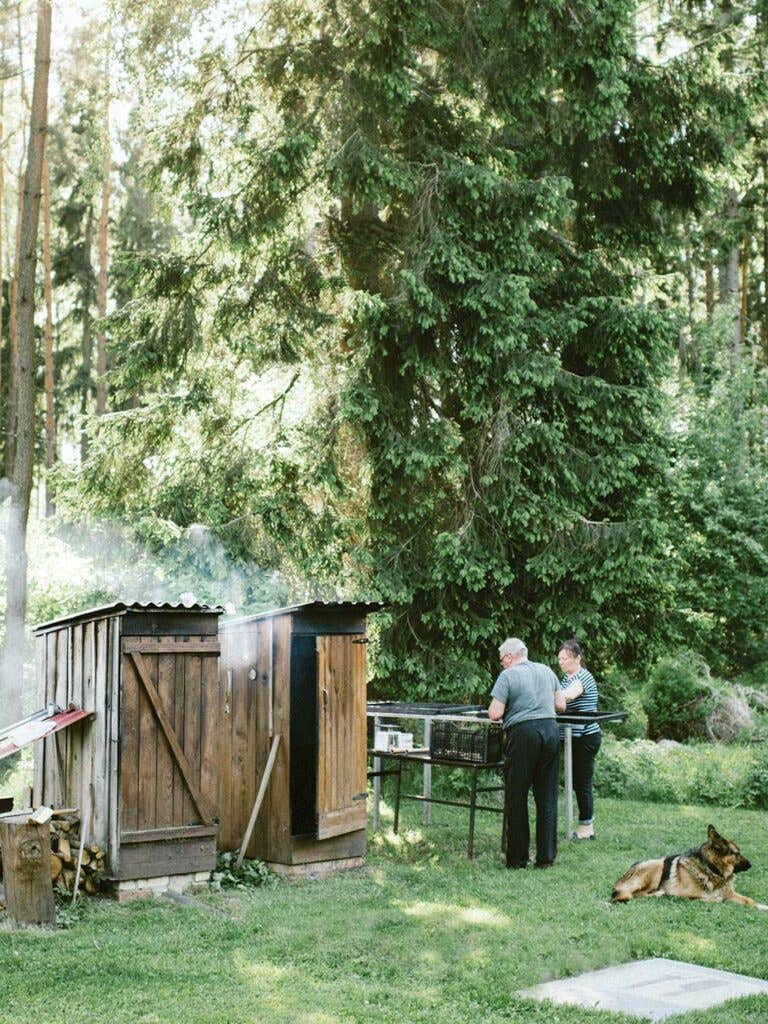
So I think we are on the right path, out of the city, headed to the sleepy town of Aloja in the Vidzeme region. Unlike most of the country, which is half-populated by ethnic Russians, Vidzeme is ethnically and culturally Latvian. We stop first in Saulkrasti, a coastal town of pale sand beaches, cabins, and fish shacks along the cold Baltic Sea, to meet up with Vija Skudra, a friend of a friend of Sarah's. We've been told that we've come to Latvia at the right time, during the three weeks of the year that she and her husband, Jānis, harvest and make smoked lucīši—tender baby ocean eelpout, an exclamation point of a fish, whose bulbous heads taper neatly to a point—a seasonal Latvian delicacy.
We arrive two hours later than expected at Vija and Jānis', a sweet little country place surrounded by a neatly trimmed orchard of black currants, apples, and plums. In the backyard sit homemade wooden smokers the size of garden sheds, one of them exhaling smoke. On the picnic table, fashioned from split logs and soaked in cheery red paint, Vija sets out what I'll come to recognize as the usual Latvian spread: coffee, fresh cows'-milk cheeses rolled in various herbs, jars of homemade jam, canned fish, and a loaf of their excellent rupjmaize, a humid, black sour rye bread, its crust so caramelized it could have been baked in the campfire coals—and, of course, a vase of homegrown flowers.
Jānis is sitting on a chair over a bucket, expertly knifing the innards from baby lucīši. Less than a foot long, they have fat heads and full bellies that thin into quill-shaped tails. “In Soviet times,” he says, flipping the fish into a bucket, “only pensioners were allowed to go fishing, but I went out with them early before work and learned from them anyway.” As he and Vija thread the fish onto the metal rods, he explains that the lucīši are smaller than they were years ago. “In Soviet times, they took too many,” Vija says, with an air of both irritability and inevitability. “They gave them all to the fox farms, to make the pelts shinier.” It makes me think: If you’re a conqueror whose aim is to tear apart the cultural fabric of the native population, there’s no better target than a beloved food tradition. The big stuff—collectivizing the economy, shipping landowners off to Siberia—delivers the major, life-changing blows, but messing with harmless seasonal fish celebrations, that’s the insidious fiberglass that really gets under people’s skin.
Vija shows us how to eat the lucīši. It’s a lot like opening up a snap pea: You bend it open at the tail, peel off the spine on one side and the hard ridge of skin along the other, then open it up to pluck out choice nuggets of sweet meat. As we eat in the garden, friends begin to arrive carrying gifts—jars of pickled beets, cheeses, homemade schnapps, beer—some of it in trade for the fish, some provisions for the party to come. Jānis, who had run off on his motorized bike, has now returned with what our late arrival warrants: a happy-hour bottle of Armenian brandy.
The Sarah I know back home is pretty careful about the drink—more so than me—but this Eastern European Sarah, speaking Latvian like a native, does not hesitate to shoot back obscure liquors. She tips back her glass and slams it down with a thunk—the international cue for a refill. Jānis picks up on it and tops her off.
Jānis doesn’t join us to peel lucīši, but sits back and smokes a cigarette. “I like to make the lucīši,” he shrugs, “but I’ve never liked to eat it. I’m just happy that other people like it so much.” I try to think what it must have felt like to keep my family traditions hidden from the government eye for as many years as they did, if the only way to keep them alive was through the food I cooked, the songs I sang to my children at night, the traditional Latvian runic patterns I hid in my knitting.
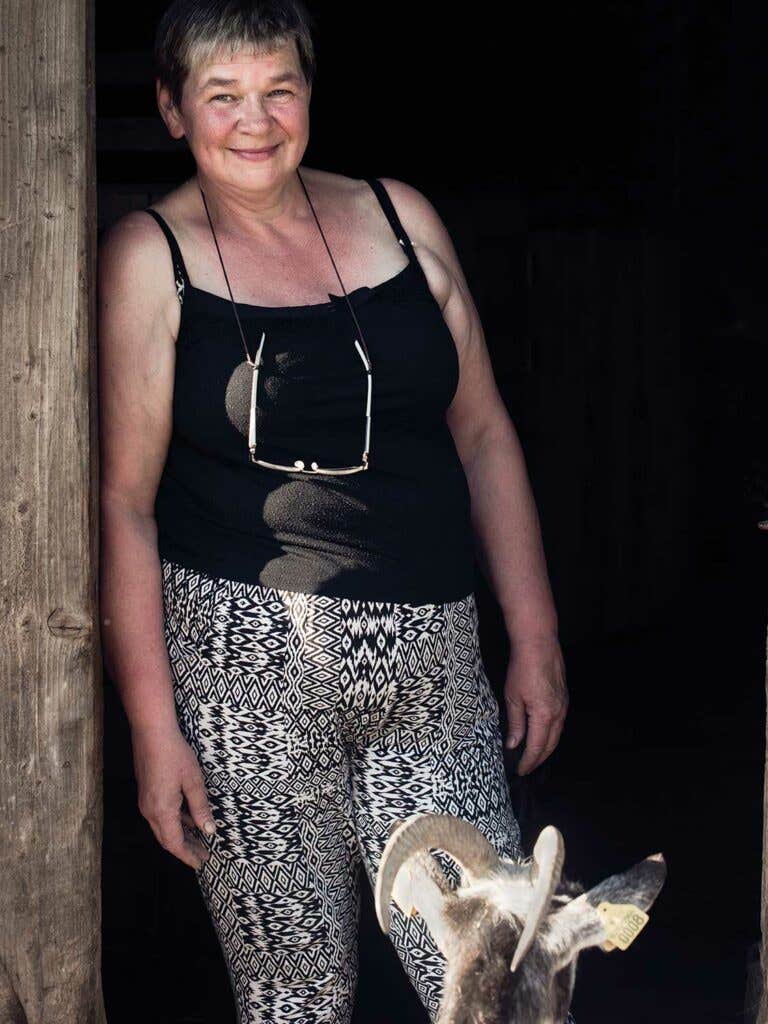
The next day, we meet the town baker of Aloja. Ruta Gailīte lives with her grown son, also named Jānis, in a weatherworn house on the last block of the town’s short main street. As we walk there, Sarah points out the ghosts of stores behind shuttered storefronts, including the collective bakery where Ruta used to work. When Sarah arrived in 1999, Latvia had gained its independence from the USSR less than 10 years prior, and people were filled with hope, but joining the world market midstream has proved to be hard on Aloja. At Ruta’s house, we turn the corner onto a picturesque farmyard—a place that neither modernity nor capitalism seem to have ever touched. In the space of a city block, she has a cow, a garden, and an old stone water well. The scene is both idyllic and heart-rendingly small in scale, a village pastoral straight out of a Vermeer painting. When the Aloja bakery in which she worked closed, Ruta continued to bake for profit at home. Her prized possession is Runcie, a literal cash cow.Ruta, a feminine woman with light blue eyes the color of a distant horizon, speaks in a high musical voice without breaking stride. “She says you need a cow,” Sarah translates for me as we walk into Ruta’s house. “She says that the foundation of cooking is the cow.” After I see her small refrigerator filled with luminous pans of cooling milk, I am momentarily convinced. People keep backyard chickens; why not a backyard cow?In her kitchen, Ruta feeds wood into the firebox of her cepeškrāsns, the traditional Latvian wood stove that is the centerpiece of her house. An impressive beast made of stacked glazed bricks with a firebox at one end and an oven door in the middle, its stovetop is nothing more than a heavy sheet of iron. On the stove’s hottest spot, directly over the oven, sits a wide pan of water, perpetually hot, for washing dishes. Bricks cover the top at varying levels, some sitting low enough to hold a simmering pot, others high enough from the heat to dry her clean cups and bowls.Ruta speaks in a fast xylophonic spree, and Sarah struggles to translate—not because she doesn’t understand Latvian, but because Ruta is speaking the highly technical language of cooking. Visually, I can translate. This is how Ruta makes her sponge cake: She stands a clean one-gallon metal coffee can in a pan of hot water on top of her wood stove, she adds five eggs, exactly five spoons of sugar, five spoons of flour. She uses a hand mixer—even though she doesn’t have running water, she does have electricity—and whips the egg mixture until it rises to the very top of the coffee can.
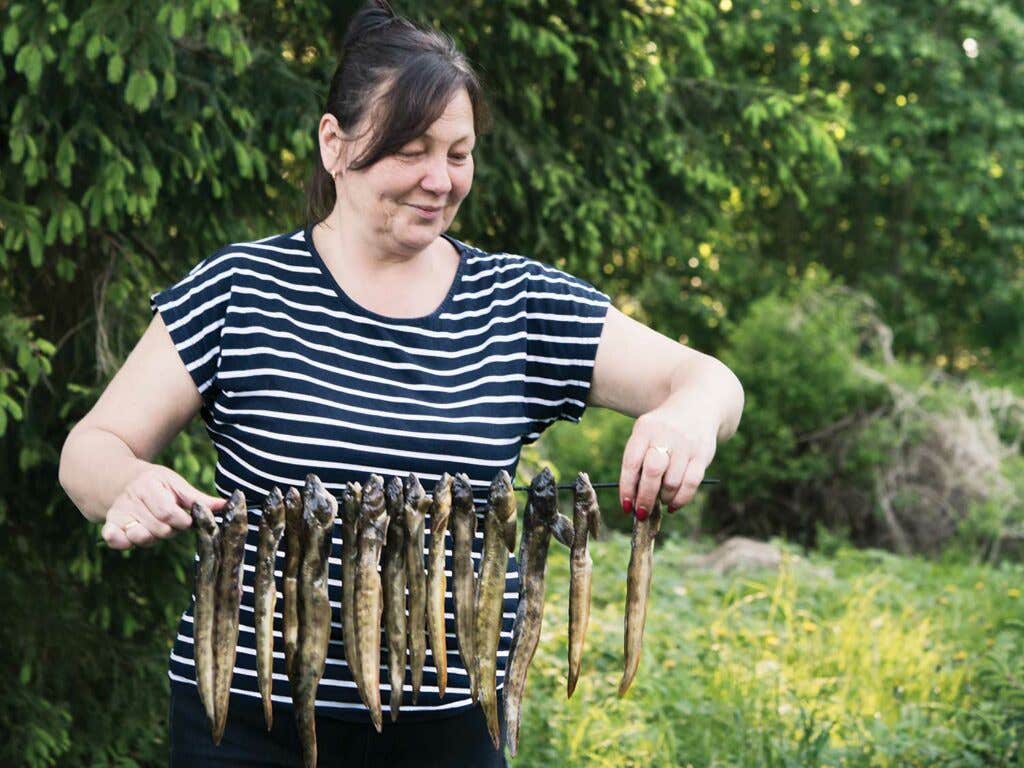
She whips seven eggs into two liters of Runcie's thick cream, making the dough for both klingeris—a sweet cake—and speķa pīrāgi, those fat buns. In the meantime, she moves her pan of dishwater aside, and sautés cubes of bacon fat and onions on the stovetop's hot spot until they melt and shimmer, then pours them over a pot of cooked pelēkie zirņi, the large brown pea that is the pride of Latvia. With thick, chewy skins and soft, cakey centers, the humble peas are luxurious when sauced with homegrown pork fat.
"Where did you get the bacon?" I ask, loving its fruitwood tang. "From Līga!" she says, setting off an effusive litany of praise about the cheesemaker we will meet the next day. They trade regularly: Ruta's cakes for Līga's lard, Ruta's biezpiens (fresh cow's-milk cheese) for Līga's siers (fresh goat's-milk cheese). When I ask Ruta if she buys anything at the store, she says, "No, no, no, no. I'm allergic to the food from the store."
Given Ruta’s meager 100-euro-per-month pension, her optimism is inspiring. “A single cake,” she boasts, “pays for two months’ worth of firewood!” As if on cue, a woman calls to Ruta from the doorway and drops off a box of garden vegetables in the foyer. In a few hours, another woman will do the same, leaving a box of foraged wild teas—clearly payment in kind to the village baker. As Ruta cooks, I watch her add butter, cream, and bacon with a heavy hand, and make this mental note: In trading, as in baking, a consistently heaped-up cup always pays you back. There’s something uncommonly beautiful about this bartering economy that modern capitalist societies miss out on. With money, the transaction is short and direct: money for goods. Bartering leaves some space for the exchange of other, more-human qualities, like kindness. Ruta “eats well” in an older sense, from when good living had more to do with creativity and know-how than it did with money.
The now-risen sweet dough feels as whispery soft as a deflated balloon. She rolls it out and brushes it with homemade condensed milk—fresh cream and sugar, boiled and reduced, which will keep for days without refrigeration. The dough ratio reminds me of a German kugelhopf, and I ask if she ever adds anything else to it—candied fruits or nuts. "No," she says, "my friends don't have expensive tastes. And they don't have the teeth anymore for almonds."
After feeding split logs into the fire to raise the oven temperature, Ruta sits on a wooden bench in front of her oven, pops in the pan of speķa pīrāgi, and stays there to monitor them—the only time today she has stopped moving. Every few minutes, as she opens the oven and turns the pan, I can see the tops browning rapidly in the waves of wood heat. When they come out, burnished to a dark caramel, we tear into them, their centers molten with onions and bacon fat. Ruta’s wiry son, Jānis, who has come back from his logging job, emerges wordlessly from the back room to grab a hot bun from the tray. Ruta smiles, as mothers do when their boys swipe pastries at any age. “I hope he finds a wife,” she says. “The problem is, girls today don’t want to milk a cow!”
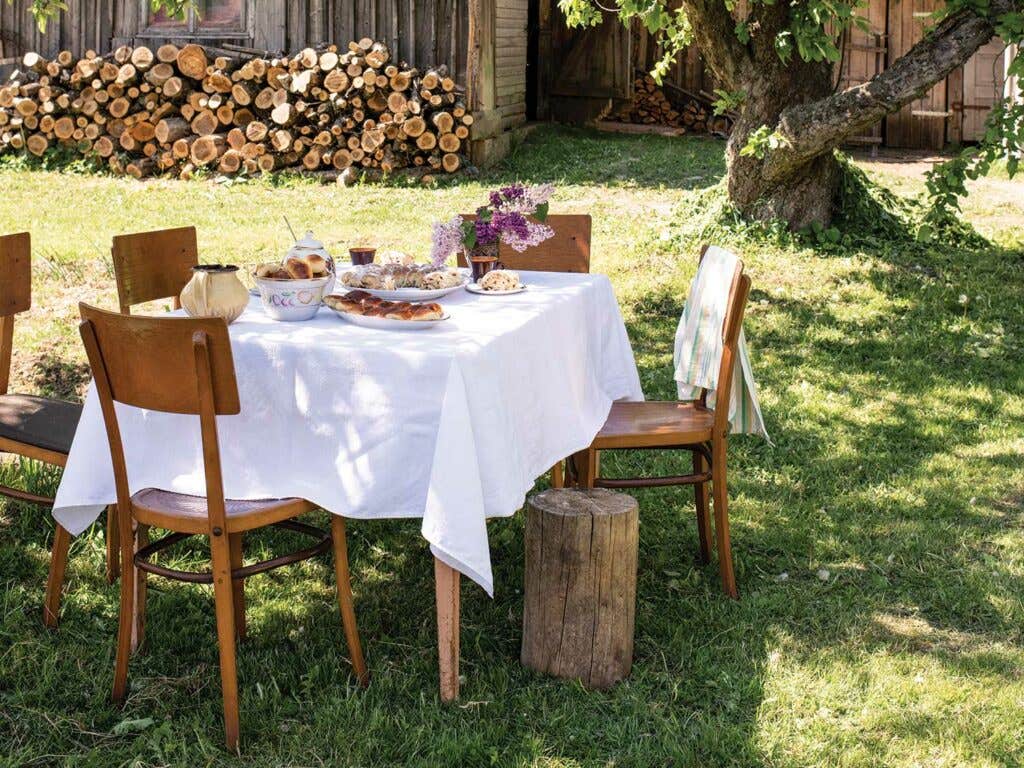
The next day, we meet Līga Kozaka, the cheesemaker. She lives with her husband, Vasilijs Kozaks, her mother, daughter Marika, and grandson Rodgrigo in a modern farmhouse built around a rustic central wooden post-and-beam structure. The house vibrates with Chopin played at top volume, the piano music cleansing the room to its corners. As at Ruta’s, the centerpiece of Līga’s house is a hulking brick cepeškrāsns. On hers sits a huge vase of flowers—tiger lilies and wild roses and dianthus the size of golf balls, so fresh they’re still damp and breathing.Wearing leopard-print pants and a pair of reading glasses perched on her cropped gray-blond head, she slices her goat cheeses into thick slabs for us to try, telling me that she has 60 goats, 38 of them milkers, and is building a new cheesemaking facility. All of the cheeses I taste in Latvia are fresh, none of them aged, and Līga’s goat cheese is by far the best of them: creamy and sweet, its goaty muskiness just an innuendo. Some are rolled in caraway, others in dill, but my favorite is studded with tan fenugreek seeds, which pop in the mouth with the taste of maple syrup.She says proudly, “I am my own boss.” And then points to Vasilijs, her husband, a man with kind, attentive eyes. “I am also his boss.” The room laughs.
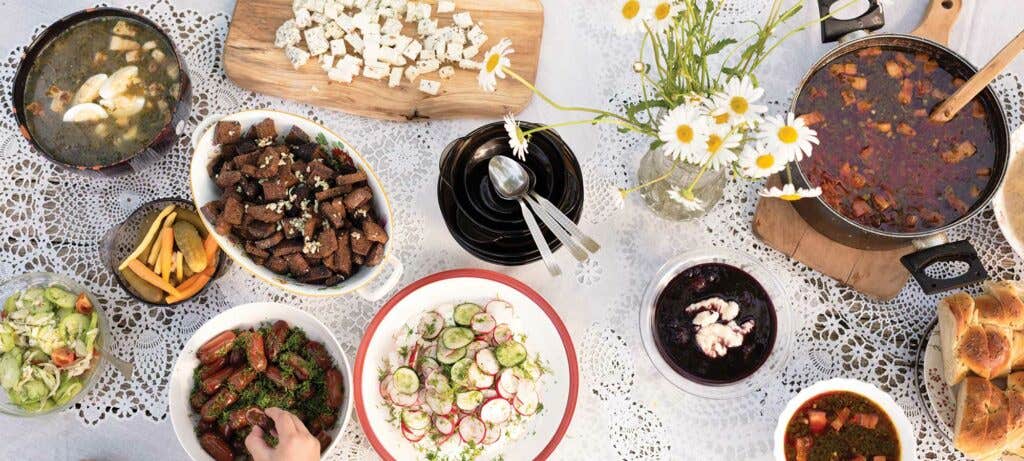
We hand Līga the many gifts Ruta sent with us: a block of fresh biezpiens, the double-layer biscuit cake, the braided loaves of caraway-seed bread. She sighs fondly and puts them away with an appreciative murmur.
Līga has generously offered to host a party for us and a crew of Sarah's Aloja friends from her Peace Corps days, and she has assembled an impressive array of dishes, already stacked high on her brick stovetop. There are two batches of hot soup, a cold blueberry soup with chewy drop dumplings, cracked cooked barley ready to be made into asins desa (a traditional blood sausage), a cucumber salad to go with Ruta's biezpiens, and a glistening bowl of kiploku grauzdiņi, the addictive rye-bread croutons I've seen all over Latvia. I learn, finally, that the secret to their deliciousness is a heavy pour of vegetable oil and an incendiary amount of raw garlic. "We call them narcoteek," Liga says when she sees that I can't stop eating them. Narcotic they are.
Liga pours a bag of glowing magenta pigs’ blood onto the barley for the asins desa. “I’ve been making this sausage for more than 30 years. These days I use spices like this,” she says, shaking a large plastic canister of spice mix, “but when I was a kid, we always added peppermint.” With their short growing season, Latvians make extensive use of perennial flavorings, herbs that need to be planted only once to come back with a vengeance every year: sorrel, chives, fresh horseradish, and the worst colonizer of them all, mint, which will spread across a garden faster than spilled water on a table. I ask if her goats like mint, and she responds with a tilted head and bugged eyes. Obviously, yes, the goats eat everything.
She needs no further prompting to show me and Sarah her “babies,” as she calls the goats, and we head to the barn, an airy wooden structure newly built on top of a centuries-old split-rock foundation. The animals immediately circle around her in a tight mosh pit. So anxious is the group to connect with Līga that I imagine she could leap onto her back from the rafters and crowd-surf around the barn.
“As I milk them,” Līga says, “we talk. Sometimes I even cry with them. They’re my best friends.” Then she yelps suddenly, slapping at one particularly naughty gray-beard, who has snuck over and begun to nibble on the loose end of Sarah’s belt. “They’re also a bunch of hooligans.”
Back in the kitchen, I help Līga bring food outside to the table, which has been set with a delicate lace tablecloth and a vase of fresh flowers. I pour her chunky beet soup—studded with melting cubes of fresh pork belly—into pots, and open a jar of rowanberry preserve to serve with the blood sausage, its skin caramelized, popping, and crisp. Līga sprays a handful of chopped dill on the tiny hot dogs one of Sarah’s friends has brought—which Liga’s 5-year-old grandson Rodgrigo snatches in handfuls from the bowl.
Following his cue, I filch a cucumber coin from the salad and pop it into my mouth. The growing season has been dry this year, and we’ve seen very little fresh produce, but it seems that the entirety of Latvia’s collective green thumb has been funneled into this single cucumber. Grassy and alkaline, ferociously green, it has the intensity particular to vegetables grown with care but without irrigation—a stubborn, tenacious cucumber-ness, made strong from hardship.
Set Your Latvia Table With These Recipes
Garlic Rye Croutons
Slathered in oil, baked until crisp, then tossed with a potent quantity of raw garlic, these rye croutons ride sidecar to every soup in Latvia. If you can’t get a loaf of rupjmaize, the sweet-sour Latvian bread, use the darkest loaf of rye bread you can find. Get the recipe for Garlic Rye Croutons »
Hot Beet Soup with Pork Belly (Bietes Zupa)
The rich pork broth that forms the base of this soup tastes light and fresh, thanks to the addition of marinated beets. Get the recipe for Hot Beet Soup with Pork Belly (Bietes Zupa) »
Latvian Braided Birthday Cake (Klingeris)
Every family seems to have its own recipe for this traditional yeasted birthday cake. Ruta Gailīte’s uses dough similar to brioche, but relies on cream instead of butter for its richness. With the addition of plump dried fruit and ground cardamom and cinnamon, it makes a perfect breakfast cake too. Get the recipe for Latvian Braided Birthday Cake (Klingeris) »
Keep Reading
Continue to Next Story
